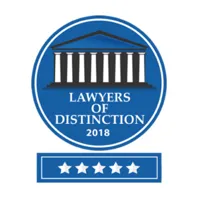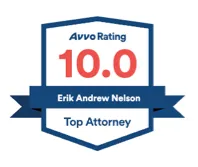In the matrix of criminal offenses, few come as heavily charged and severely punished as controlled substance convictions. Navigating the labyrinth of drug-related charges can seem like traversing a treacherous mountain range blindfolded. With potential penalties ranging from hefty fines to significant prison terms, understanding the gravity of such charges is crucial. In this illuminating piece, we delve deep into the labyrinth, breaking down the severity and penalties associated with controlled substance convictions – offering a guiding light in what can often feel like unending darkness. For those entwined in such legal complications or simply seeking information on the subject matter, this blog could serve as a lifeline or enlightenment guide. Buckle up as we embark on this riveting exploration.

Classification of Controlled Substances
To understand the serious nature and penalties associated with controlled substance convictions, it is crucial to have a clear understanding of how controlled substances are classified. The classification of controlled substances helps determine the severity of controlled substance convictions and the potential penalties that can be imposed for their possession, use, or distribution.
Controlled substances are typically categorized into different schedules based on their potential for abuse, accepted medical use, and overall safety under the Controlled Substances Act (CSA) in the United States. The CSA classifies controlled substances into five schedules: Schedule I, Schedule II, Schedule III, Schedule IV, and Schedule V.
- Schedule I: This category includes drugs considered to have a high potential for abuse and no accepted medical use. Examples of Schedule I substances include heroin, LSD (acid), ecstasy (MDMA), peyote, and marijuana (under federal law).
- Schedule II: These substances have a high potential for abuse but may have limited accepted medical uses. They are subject to strict regulations. Examples of Schedule II substances include cocaine, methamphetamine, methadone, oxycodone, fentanyl, and Adderall.
- Schedule III: Drugs under this category have a lower potential for abuse compared to Schedules I and II and have accepted medical uses. Examples include anabolic steroids, ketamine, testosterone, and some prescription medications.
- Schedule IV: These substances have a lower potential for abuse than Schedules I-III and currently accepted medical uses. Examples include Xanax, Valium, Ativan, Ambien, and Tramadol.
- Schedule V: This category includes substances with a low potential for abuse relative to other schedules. Many Schedule V drugs contain limited quantities of narcotics used for medicinal purposes. Examples include cough syrups containing codeine or preparations containing small amounts of opium.
The classification table below provides an overview of substances and their respective schedules:
| Schedule | Examples |
| Schedule I | Heroin, LSD, ecstasy, marijuana (under federal law) |
| Schedule II | Cocaine, methamphetamine, oxycodone, fentanyl |
| Schedule III | Anabolic steroids, ketamine, testosterone |
| Schedule IV | Xanax, Valium, Ativan, Ambien |
| Schedule V | Codeine-containing cough syrups, preparations with small amounts of opium |
Understanding the classification of controlled substances lays the foundation for comprehending the legal implications surrounding state and federal jurisdiction in cases related to controlled substance convictions.
State vs. Federal Jurisdiction
When it comes to controlled substances and their related offenses, it is important to recognize that both state and federal laws may come into play. While there is some overlap between them, it’s essential to understand the distinction between state and federal jurisdiction.
State Jurisdiction: Each state has its own set of laws governing controlled substances. These laws vary from state to state in terms of drug classification, penalties, and sentencing guidelines. State law enforcement agencies typically handle investigations and prosecutions related to drug offenses that occur within their specific jurisdiction.
For instance, possession of a certain quantity of marijuana may be considered a misdemeanor in one state while classified as a felony in another. The severity of penalties also differs based on factors such as prior controlled substance convictions and the intent of the individual involved.
Federal Jurisdiction: In contrast to state laws, federal laws apply across all states in the country. The federal government’s role in drug enforcement involves targeting larger-scale drug trafficking organizations or cases involving drugs crossing state borders. Federal drug offenses commonly include drug trafficking, manufacturing or distributing controlled substances across state lines or international borders, and operating illicit drug operations on a significant scale.
While states have the authority to enforce their own drug laws, federal law enforcement agencies such as the Drug Enforcement Administration (DEA) and the Federal Bureau of Investigation (FBI) can step in to investigate and prosecute cases that fall under their jurisdiction. Convictions under federal law generally lead to harsher penalties compared to equivalent state offenses due to differing sentencing guidelines.
The distinction between state and federal jurisdiction underscores the complexity of controlled substance convictions. Understanding which jurisdiction applies to a specific case is essential for effective legal navigation and defense strategies.
Penalties of Controlled Substance Convictions
Controlled substance convictions carry severe penalties due to the significant potential harm these substances can cause to individuals and society. These penalties aim to deter drug-related activities, protect public safety, and promote rehabilitation. Let’s explore some of the key penalties associated with controlled substance convictions.
Incarceration is a common penalty for controlled substance convictions and can have a profound impact on a person’s life. Depending on the severity of the offense, individuals may face imprisonment ranging from months to years. The length of incarceration often depends on factors such as the type and quantity of drugs involved, any prior criminal record, and the presence of aggravating circumstances like violence or intent to distribute.
Fines are another consequence associated with controlled substance convictions. These financial penalties can be significant and vary depending on several factors, including the type of drug offense, the amount of drugs involved, and whether it is a first-time or repeat offense. Courts impose fines as a form of punishment and also to deter individuals from engaging in illegal drug-related activities.
For instance, possession of a small amount of marijuana for personal use may result in a lesser fine compared to being caught with larger quantities or being involved in drug trafficking operations.
Additionally, individuals convicted of controlled substance offenses may face other collateral consequences that extend beyond incarceration and fines. These consequences may include mandatory drug counseling or treatment programs, probation or parole supervision, loss of professional licenses or employment opportunities, limitations on housing options, restrictions on travel or obtaining visas for international purposes, and difficulty in securing student loans or financial aid.
It is crucial to note that the nature and severity of penalties for controlled substance convictions can vary significantly based on several factors such as jurisdiction, specific laws pertaining to different substances, previous criminal history, involvement in organized crime activities, and possession with intent to distribute.
Incarceration and Fines
When it comes to controlled substance convictions, incarceration and fines are two primary penalties that individuals may face. The severity of these consequences can depend on several factors, including the type and quantity of drugs involved, the location of the offense, and the individual’s criminal history.
Incarceration serves as a form of punishment and aims to deter future drug-related offenses. It can range from short-term sentences in local jails to long-term imprisonment in state or federal prisons. The length of incarceration is typically determined by the seriousness of the offense and may be influenced by factors such as possession for personal use versus intent to distribute.
Fines, on the other hand, are financial penalties imposed by the court system. They are intended to punish offenders and provide restitution to society. The amount of fines can vary greatly depending on the specific drug offense and jurisdiction. Factors such as the quantity of drugs involved, any aggravating circumstances, and previous convictions can influence the fine imposed.
For instance, possession of a small amount of a controlled substance for personal use might result in a lesser fine compared to being caught with large quantities or being involved in drug trafficking.
It is important to note that both incarceration and fines are not mutually exclusive penalties. In many cases, individuals convicted of controlled substance offenses may face a combination of both penalties based on the circumstances surrounding their case.
Understanding these penalties is crucial when facing controlled substance convictions. However, it is essential to consider various factors when facing controlled substance convictions that can influence sentencing outcomes. Let us explore some key factors that come into play during sentencing in drug convictions.
Factors Influencing Sentencing in Drug Convictions
When it comes to controlled substance convictions, the severity of the offense and subsequent penalties can vary significantly based on a multitude of factors. The criminal justice system takes several elements into account during sentencing, aiming to ensure fairness while considering the specific circumstances of each case. Understanding these factors influencing sentencing in controlled substance convictions is crucial for defendants and their legal representatives as they navigate through the legal process.
One of the primary factors considered in controlled substance convictions is the type and quantity of drugs involved in the offense. Different substances carry varying levels of severity in terms of potential harm and societal impact. For instance, charges related to illegal narcotics like cocaine or heroin generally result in more severe penalties compared to offenses involving less potent substances such as marijuana. Similarly, larger quantities of drugs tend to attract harsher sentences due to presumed intent for distribution or trafficking.
Another significant factor is the offender’s criminal history, specifically any prior drug-related convictions. Repeat offenders may face longer sentences as they are considered a higher risk to society and might not have responded effectively to previous interventions or rehabilitation efforts. On the other hand, first-time offenders might be given more leniency as the court recognizes their potential for rehabilitation and reform.
Additionally, aggravating factors surrounding the offense can contribute to increased penalties. These factors may include involvement in organized crime or drug cartels, possession of firearms during the commission of a drug crime, or engaging in violent activities related to drug trafficking. Such circumstances intensify both the seriousness of the offense and potential risks posed to public safety.
Courts also take into consideration any mitigating factors that might warrant lesser sentences. For example, if an individual played a minor role in a larger drug operation or provided substantial cooperation with authorities leading to the arrest and conviction of higher-level offenders, their sentence may be reduced as a reward for assisting law enforcement.
Finally, certain states have implemented alternative sentencing programs aimed at diverting nonviolent drug offenders towards rehabilitation rather than imprisonment. These programs, such as drug courts or specialized treatment options, recognize that addiction can contribute to criminal behavior and prioritize addressing the underlying problem instead of punitive measures.
It is crucial to emphasize that these factors are not exhaustive, and sentencing can vary based on jurisdiction and individual circumstances. Navigating through this complex terrain requires the expertise of an experienced criminal defense attorney who can build a strong defense tailored to the specific details of each case.
Understanding Drug Schedules and Their Legal Impact
To comprehend the legal consequences associated with different drugs, it is important to explore the Drug Enforcement Administration’s (DEA)classification system known as drug schedules. The DEA categorizes controlled substances into five separate schedules based on their potential for abuse, medical use, and the level of dependence they may cause. Understanding these classifications helps individuals charged with drug offenses to grasp the severity of the charges they may face and the potential penalties.
For instance, Schedule I drugs are considered the most dangerous as they have a high potential for abuse and no recognized medical use. Examples of Schedule I substances include heroin, ecstasy (MDMA), LSD, and marijuana under federal law. Convictions involving Schedule I drugs generally carry severe penalties due to the perceived harm associated with these substances.
On the other end of the spectrum, Schedule V drugs possess a lower potential for abuse compared to other schedules and are commonly used in accepted medical treatments. These substances may include cough syrups containing codeine or antidiarrheal medications with small amounts of opium. Convictions related to Schedule V drugs often result in less severe penalties but can still carry legal consequences depending on the specific circumstances.
Understanding the legal impact of drug schedules is essential not only for defendants but also for their attorneys. It can guide defense strategies by highlighting opportunities for challenging charges, navigating potential plea deals, or identifying possible mitigating factors. For instance, demonstrating a recognized medical use for a drug listed on a higher schedule may provide a defense against the charges or create grounds for negotiation.
Think of drug schedules as different categories in a library – books on the top shelf (Schedule I) are considered the most dangerous and restricted, while books on lower shelves (Schedules II to V) have varying levels of intensity and availability.
By understanding drug schedules and their legal implications, individuals facing drug-related charges can make informed decisions about their defense and work towards achieving the best possible outcome given their circumstances.
The Role of the Controlled Substances Act
The Controlled Substances Act (CSA) is a crucial piece of legislation that plays a significant role in regulating and governing controlled substances in the United States. Enacted by Congress in 1970, it serves as the backbone for the nation’s drug policy and provides the legal framework for classifying and controlling various drugs based on their potential for abuse, accepted medical uses, and overall safety.
The primary objective of the CSA is to protect public health and safety by preventing illicit drug trafficking, misuse, and abuse. It establishes five schedules or categories under which drugs are classified according to their potential for abuse and accepted medical use. Schedule I includes substances with a high potential for abuse and no recognized medical use, such as heroin and LSD. Schedule II encompasses drugs like cocaine and oxycodone with a high potential for abuse but accepted medical uses with severe restrictions.
Legally controlled substances under the CSA include not only illegal drugs but also prescription medications designated as controlled substances due to their potential for misuse or addiction. This means that even if a medication is lawfully prescribed by a healthcare professional, unauthorized possession or distribution could still lead to serious legal consequences.
Under this act, penalties for violations can vary depending on factors such as the type and quantity of the controlled substance involved, prior criminal history, and intent. Convictions related to controlled substances can result in severe consequences, including hefty fines, mandatory minimum prison sentences, loss of professional licenses or job opportunities, restricted access to federal benefits or student aid programs, and tarnished reputation.
For instance, let’s consider an individual who is caught possessing a small amount of marijuana. In some states where marijuana is decriminalized or legalized for recreational use, the consequences may be less severe. However, at the federal level and in many states where marijuana remains illegal, this offense could lead to criminal charges, fines, and potential imprisonment.
The CSA also empowers federal agencies such as the Drug Enforcement Administration (DEA) to oversee and enforce the controlled substances regulations. These agencies collaborate with state and local law enforcement to investigate drug-related offenses, dismantle drug trafficking organizations, and combat substance abuse epidemics. Additionally, the CSA enables government agencies to regulate the manufacturing, distribution, prescribing, dispensing, and possession of controlled substances through licensing requirements and strict monitoring systems.
It is worth noting that penalties for controlled substance convictions can be particularly severe in cases involving certain drugs like methamphetamines or opioids due to their highly addictive nature and devastating impact on individuals and communities. Therefore, it is crucial for individuals facing controlled substance charges to seek immediate legal representation from an experienced criminal defense attorney who understands the complexities of drug laws and can develop a strong defense strategy.
The Controlled Substances Act serves as a cornerstone in regulating controlled substances in the United States. By classifying drugs into different schedules and establishing legal frameworks for their use, the act aims to protect public health and safety. Understanding the role of this legislation is vital for anyone involved in cases related to controlled substance convictions. If you find yourself facing such charges, it is imperative to consult with a knowledgeable attorney who can guide you through the legal process and advocate for your rights. Remember that each case is unique, and having proper legal support can make a significant difference in achieving the best possible outcome.







